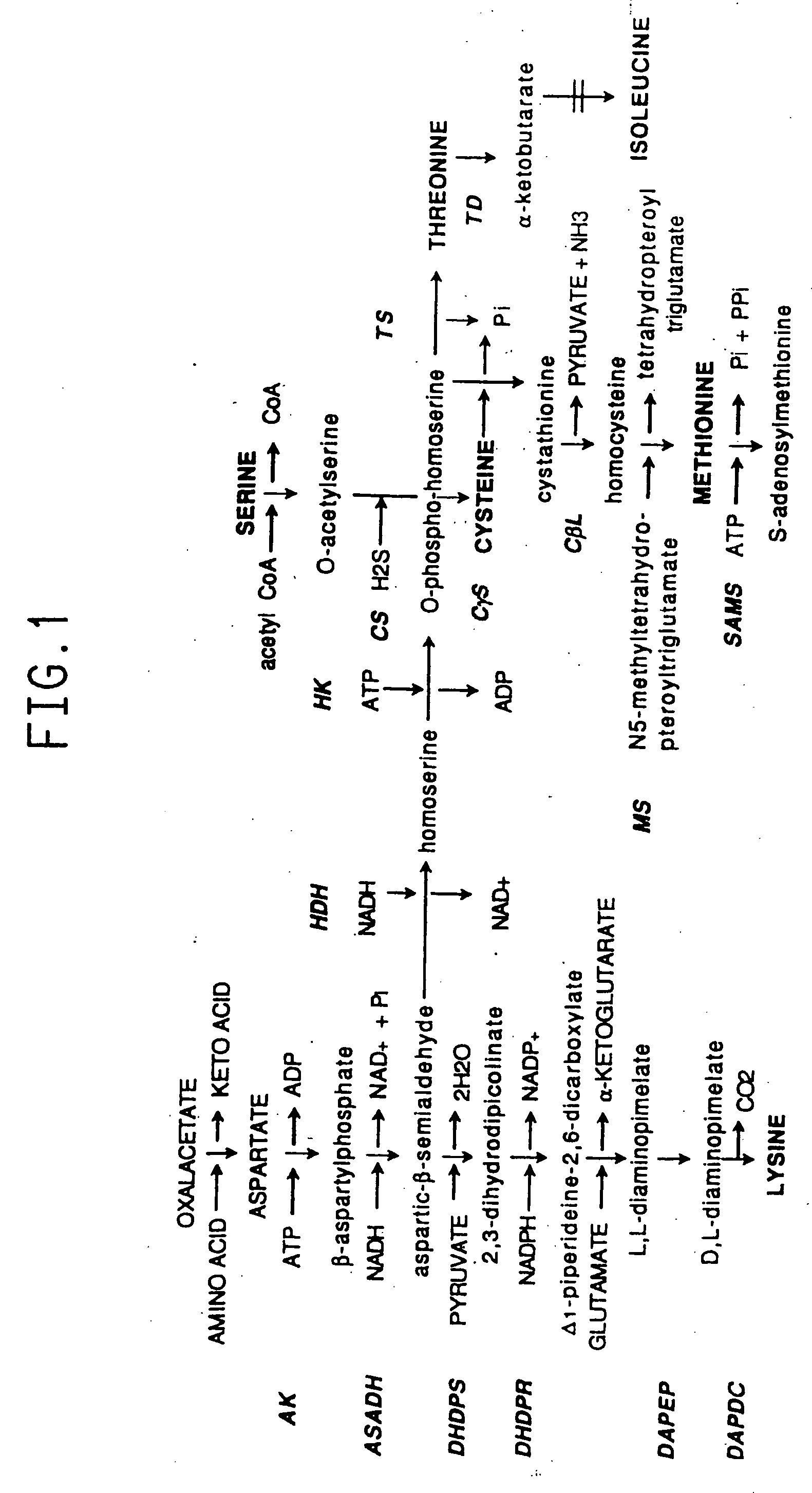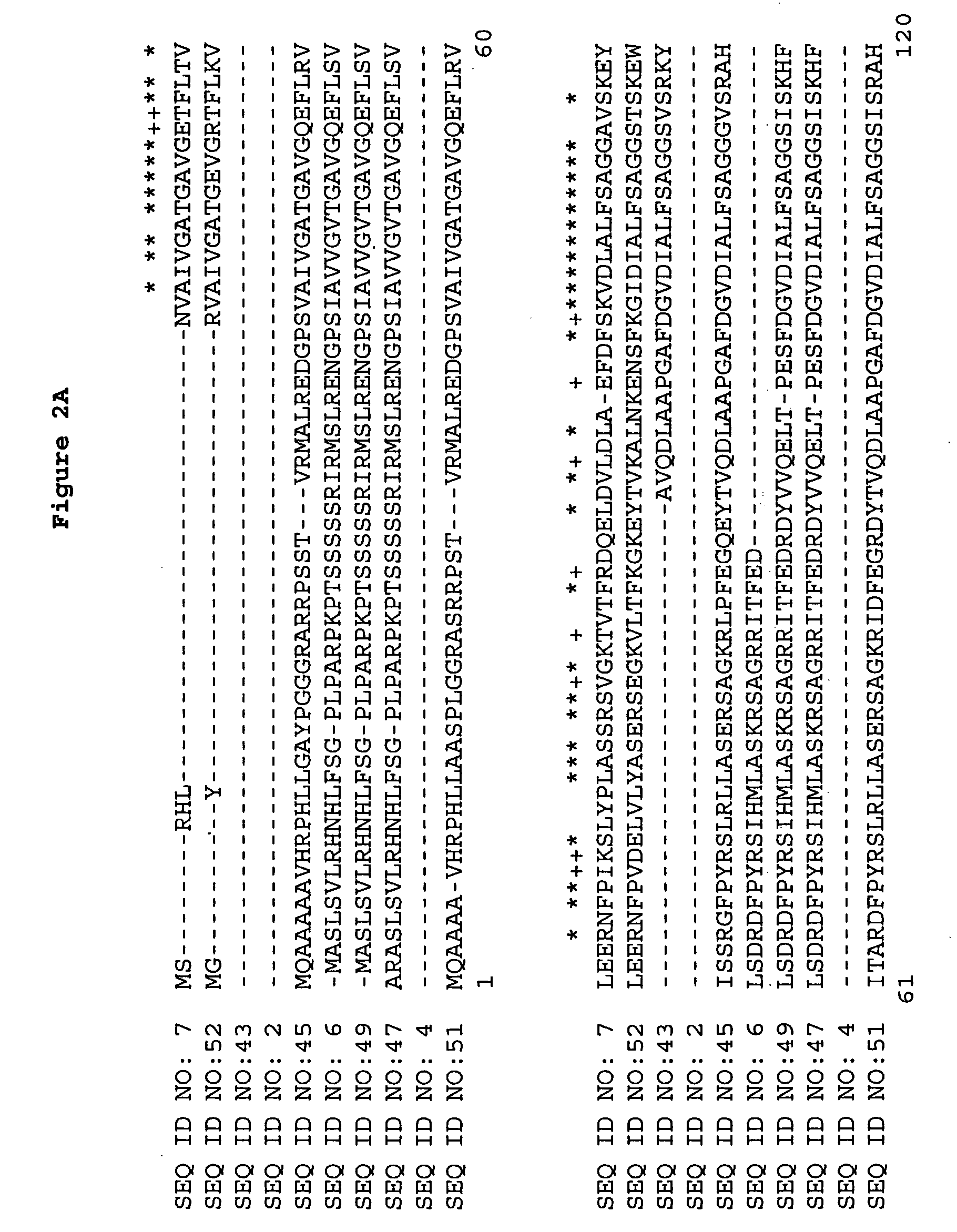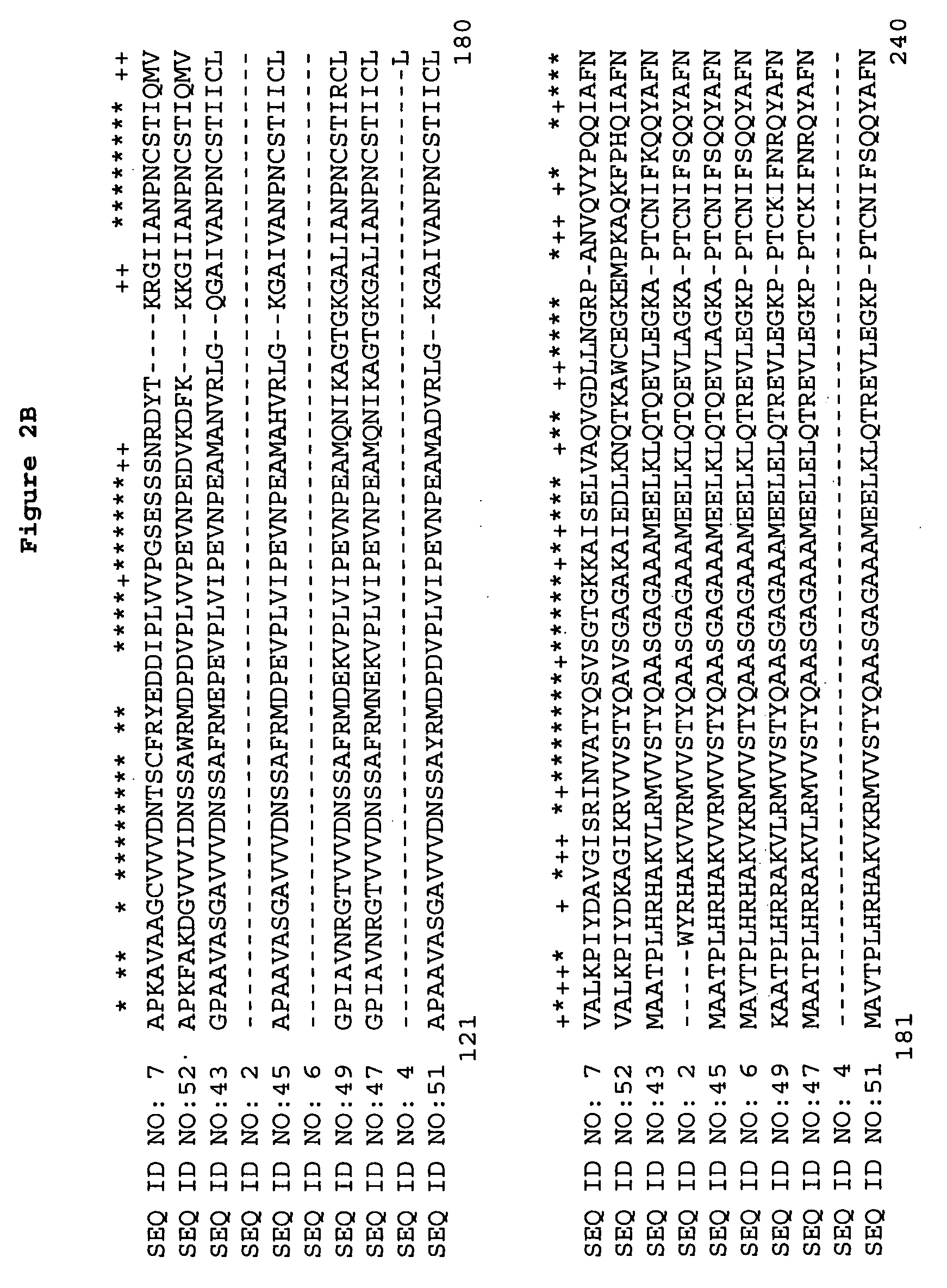Plant amino acid biosynthetic enzymes
- Summary
- Abstract
- Description
- Claims
- Application Information
AI Technical Summary
Problems solved by technology
Method used
Image
Examples
example 1
Composition of cDNA Libraries; Isolation and Sequencing of cDNA Clones
[0215] cDNA libraries representing mRNAs from various corn, rice, soybean, and wheat tissues were prepared. The characteristics of the libraries are described below.
TABLE 2cDNA Libraries from Corn, Rice, Soybean, and WheatLibraryTissueClonecen1Corn Endosperm 12 Days After Pollinationcen1.pk0061.d4cen3nCorn Endosperm 20 Days After Pollination*cen3n.pk0067.a3cpe1cCorn pooled BMS treated with chemicals related tocpe1c.pk009.b24phosphatase**cr1nCorn Root From 7 Day Seedlings*cr1n.pk0009.g4cr1nCorn Root From 7 Day Seedlings*cr1n.pk0103.d8p0003Corn Premeiotic Ear Shoot, 0.2-4 cmp0003.cgpha22r:fisp0005Corn Immature Earp0005.cbmei71rp0014Corn Leaves 7 and 8 from Plant Transformed withp0014.ctuui39rG-protein Gene, C. heterostrophus Resistantp0016Corn Tassel Shoots (0.1-1.4 cm), Pooledp0016.ctscp83rp0075Corn Shoot And Leaf Material Fromp0075.cslab16rDark-Grown 7 Day-Old Seedlingsp0109Corn Leaves From Les9 Transition Zone...
example 2
Identification of cDNA Clones
[0220] cDNA clones encoding plant amino acid biosynthetic enzymes were identified by conducting BLAST (Basic Local Alignment Search Tool; Altschul et al. (1993) J. Mol. Biol. 215:403-410) searches for similarity to sequences contained in the BLAST “nr” database (comprising all non-redundant GenBank CDS translations, sequences derived from the 3-dimensional structure Brookhaven Protein Data Bank, the last major release of the SWISS-PROT protein sequence database, EMBL, and DDBJ databases). The cDNA sequences obtained in Example 1 were analyzed for similarity to all publicly available DNA sequences contained in the “nr” database using the BLASTN algorithm provided by the National Center for Biotechnology Information (NCBI). The DNA sequences were translated in all reading frames and compared for similarity to all publicly available protein sequences contained in the “nr” database using the BLASTX algorithm (Gish and States (1993) Nat. Genet. 3:266-272) pr...
example 3
Characterization of cDNA Clones Encoding Aspartate Semialdehyde Dehydrogenase
[0222] The BLASTX search using the EST sequences from clones listed in Table 3 revealed similarity of the polypeptides encoded by the cDNAs to aspartate semialdehyde dehydrogenase from Synechocystis sp. (DDJB Accession No. D64006; NCBI General Identifier No. 1001379) or Legionella pneumophila (GenBank Accession No. AF034213; NCBI General Identifier No. 2645882). Shown in Table 3 are the BLAST results for individual ESTs (“EST”), or for the sequences of the entire cDNA inserts comprising the indicated cDNA clones (“FIS”):
TABLE 3BLAST Results for Sequences Encoding Polypeptides Homologousto Aspartate Semialdehyde DehydrogenaseBLAST pLog ScoreSynechocystis sp.Legionella pneumophilaCloneStatusGI 1001379GI 2645882rlr48.pk0003.d12FIS51.0036.00wr1.pk0004.c11EST67.9644.74sfl1.pk0122.f9EST6.60
[0223] The sequence of the entire cDNA insert in clone sfl1.pk0122.f9 was determined, RACE PCR was used to obtain the 5′ p...
PUM
| Property | Measurement | Unit |
|---|---|---|
| Fraction | aaaaa | aaaaa |
| Fraction | aaaaa | aaaaa |
| Fraction | aaaaa | aaaaa |
Abstract
Description
Claims
Application Information
 Login to View More
Login to View More - R&D
- Intellectual Property
- Life Sciences
- Materials
- Tech Scout
- Unparalleled Data Quality
- Higher Quality Content
- 60% Fewer Hallucinations
Browse by: Latest US Patents, China's latest patents, Technical Efficacy Thesaurus, Application Domain, Technology Topic, Popular Technical Reports.
© 2025 PatSnap. All rights reserved.Legal|Privacy policy|Modern Slavery Act Transparency Statement|Sitemap|About US| Contact US: help@patsnap.com



